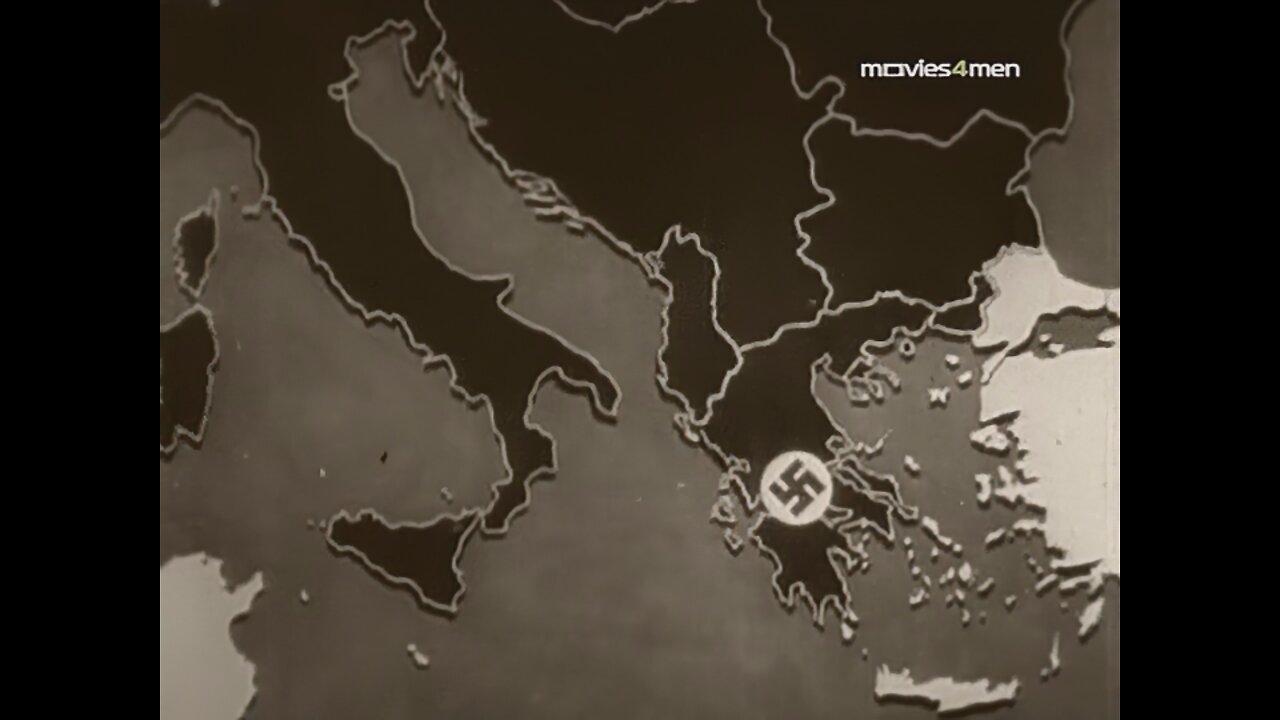Premium Only Content

The Battle of Crete - Operation Mercury -SD
Hitler’s invasion of Crete followed hot on the heels of his devastating campaign on the Greek mainland. Forewarned by Ultra, General Freyberg prepared to meet the attack at several locations across the island (right). Major airborne assaults at Rethimno and Iraklio, and a smaller one at Kastelli, were contained. West of Hania, however—the preserve of 2 New Zealand Division—the Germans gained toeholds at Maleme airfield and in Prison Valley (below). After an unsuccessful attempt to retake the airfield, the New Zealanders fell back to the east, along with other Allied forces from the Hania–Souda area. Despite fearless resistance, notably at Galatos, 42nd Street and Stilos, retreat to the south coast and evacuation by the Royal Navy offered the bulk of Freyberg’s army its only chance of escape. For many, even this proved a forlorn hope, roughly a quarter of the total force falling prisoner. Resistance to the German (and Italian) occupation of Crete was intense, but liberation came only in 1945.
https://www.nzgeo.com/stories/crete/
In May 1941 the German Luftwaffe conducted the first purely airborne invasion of an island in history. Although German airborne forces would seize the island of Crete their operational objective, the operation was accomplished at great risk of failure and at great cost in personnel and resources due to the lawed application of operational art. Operation Mercury was an operational objective of opportunity following unexpectedly successful operations in Greece and Yugoslavia. With only three weeks to plan and prepare prior to execution, improvisation and compromise would characterize the attack. although the operation ended in the seizure of Crete, the cost in lives and resources would prevent Hitler from ever again risking his airborne forces in a major airborne operation. This case study reviews the broad strategic setting surrounding the operation and provides an analysis contrasting German planning and preparation with execution. Through an examination of the operational factors of space, time, and force, an analysis of the operational functions of operational command and control, intelligence, and fires, and an examination of vertical envelopment as a form of operational maneuver, on can derive significant lessons learned applicable to todays forced entry operations.
-
 5:58
5:58
Mrgunsngear
3 hours ago $0.78 earnedBreaking: The New Republican Party Chairman Is Anti 2nd Amendment
4.46K5 -
 LIVE
LIVE
Geeks + Gamers
3 hours agoGeeks+Gamers Play- MARIO KART WORLD
232 watching -
![(8/27/2025) | SG Sits Down Again w/ Sam Anthony of [Your]News: Progress Reports on Securing "We The People" Citizen Journalism](https://1a-1791.com/video/fww1/d1/s8/6/G/L/3/c/GL3cz.0kob.1.jpg) 29:34
29:34
QNewsPatriot
3 hours ago(8/27/2025) | SG Sits Down Again w/ Sam Anthony of [Your]News: Progress Reports on Securing "We The People" Citizen Journalism
6.93K1 -
 25:12
25:12
Jasmin Laine
8 hours agoDanielle Smith’s EPIC Mic Drop Fact Check Leaves Crowd FROZEN—Poilievre FINISHES the Job
13.6K19 -

ZWOGs
11 hours ago🔴LIVE IN 1440p! - SoT w/ Pudge & SBL, Ranch Sim w/ Maam & MadHouse, Warzone & More - Come Hang Out!
6.94K -
 LIVE
LIVE
This is the Ray Gaming
1 hour agoI'm Coming Home Coming Home Tell The World... | Rumble Premium Creator
39 watching -
 9:42:31
9:42:31
GrimmHollywood
10 hours ago🔴LIVE • GRIMM HOLLYWOOD • GEARS OF WAR RELOADED CUSTOMS • BRRRAP PACK •
5.61K -
 1:13:28
1:13:28
Glenn Greenwald
5 hours agoGlenn Takes Your Questions on the Minneapolis School Shooting, MTG & Thomas Massie VS AIPAC, and More | SYSTEM UPDATE #506
111K50 -
 1:22:51
1:22:51
RCAM
1 hour agoLIVE | Trans Shooter Who Targeted Christians | Premium Creator
3.34K2 -
 LIVE
LIVE
Spartan
5 hours agoMaybe finishing Expedition 33, then back to Halo Grind
16 watching